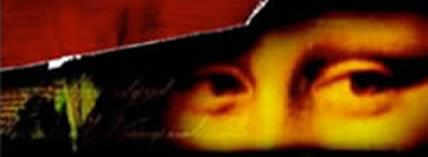Breaking 'The Da Vinci Code'
In this workshop, we will discuss the specific problems with the novel The Da Vinci Code from the standpoint of its handling of Christian history up to AD 325 and Nicea. We will also discuss the canon and the role of women as portrayed in the novel, as well as the nature of the extra-biblical gospels the novel appeals to for its view of early church history.
1. The Da Vinci Code
• My story of involvement with the book
• The claim of page 1, the basic claims of the book, Dan Brown’s testimony, and why it matters
• The roots of the novel: Holy Blood, Holy Grail and some recent early church scholarship
2. The Premise
(Comment on Last Supper frescos of the period which DaVinci fresco parallels)
3. Three Key Texts
1) Hippolytus, Song of Songs: On the female Apostles
2) Gospel of Philip 63:33-36 - An Undefined Special Relationship to Jesus - (2 versions of this text: the original, the suggested)
3) Gospel of Mary 17:10-18:21: Recipient of Revelation
Summary on Three Texts
No text explicitly says Jesus is married
Meaning of the texts that might infer it are very unclear
Two texts out of hundreds of texts
Implications for The Da Vinci Code
The base element for the novel’s claim is lost
Why this matters: attempt is to redefine Christianity
Engage, do not withdraw, from the culture
How?
1 Peter 3:14-17 - Be ready to give a defense for the hope that is in you
In an informed manner, graciously, sensitive to how others think: listen and dialogue, don’t just tell, but engage the facts.
Did the Church Lie?
The Claim: Jesus was made divine by the fourth century church by those who won an ecclesiastical fight at the Council of Nicea in AD 325 (pp.231-35).
Claims about Christianity
So what of the claims?
Three correct claims in the novel:
1) Constantine was a key figure and that his rule was a turning point in Christian history.
2) The Nicene Creed was an important affirmation in the history of the faith and was, in part, an effort to control what was to be believed. The creed was an attempt to affirm the core of what Christians regarded as essential for all Christians to believe, a significant exercise for a movement experiencing the diversity that Christianity faced in AD 325.
3) The collection of texts into an official list that became the canon of Scripture gained momentum in this period.
Before Nicea and the New Testament
How were Christians instructed before there was a New Testament?
Books were read in the churches. Roots of some of our services, even today. The reading of the texts in the service. Part of being an oral culture. Question became which books should be read in church.
Three Questions
1) Was Jesus made divine in AD 325?
2) How did we get four Gospels?
3) Are the extra-biblical texts pro-women and is their theology like the rest of Scripture?
Jesus & Divinity: NOT Late or by a Close Vote
1) Most “Secret” Gospels have a “divine” Jesus, not a human one. (Novel is wrong in several ways: Gospels not a “secret”; many of these texts had a divine Jesus, not a human one as novel claims) The Agenda: Let’s make Jesus like any other religious great. Let’s not focus on his uniqueness. A divine, unique Jesus messes things up.
2) Jesus was worshipped from the start:
1 Corinthians 8:5-6: “Although there may be so-called gods in heaven or on earth—as indeed there are many ‘gods’ and many ‘lords’—yet for us there is one God, the Father, from whom are all things and for whom we exist, and one Lord, Jesus Christ, through whom are all things and through whom we exist.
John 1:1,14: “In the beginning was the Word and the Word was with God and the Word was God….And the Word became flesh.”
Philippians 2:9-11: “God has highly exalted him and bestowed on him the name which is above every name, that at the name of Jesus every knee should bow, in heaven and on earth and under the earth, and every tongue confess that Jesus Christ is Lord, to the glory of God the Father.”
Hebrews 1:3: “He reflects the glory of God and bears the very stamp of His nature.”
The trial scene of Jesus
Point: The belief that Jesus was divine goes back to the earliest documents because the idea goes back to him. By AD 325, the idea that Jesus was divine was already “ancient” history.
What the council did was to define what was believed in precise, more philosophical-theological language
Why only four Gospels?
Canon – “reed” or “standard”. Books that define the faith.
By AD 180, the four gospels had clearly established themselves as the key witnesses to Jesus as several ancient witnesses make clear. All these witnesses date to the late second century, early third century (125-100 years before Nicea).
1) Irenaeus – the 'Four-fold Gospel' as the Gospel
2) Tatian – The Diatessaron
3) Muratorian Canon – only 4 Gospels listed
4) Origen
• Secret Gospels: Pro-women?
• Secret Gospels: A Different Theology
• How Mary Magdalene Matters
• Mary, the Great Witness
• How Mary Matters



